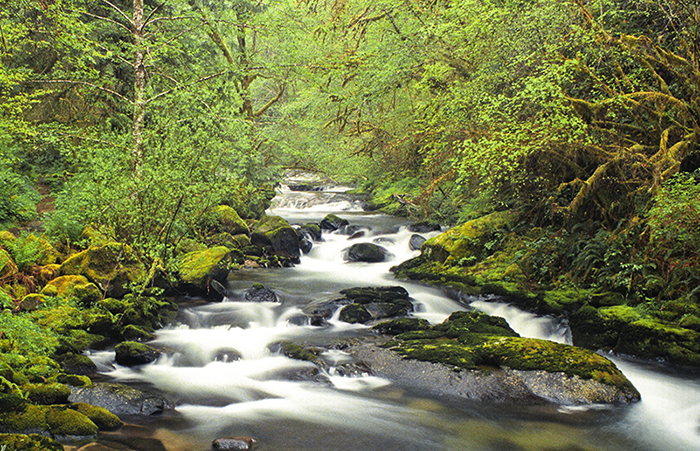
Sweet Creek, Oregon. Photo by Carla Hervert
NOW is the time to submit your comments & questions on the Oregon Department of Forestry’s Climate Change and Carbon Plan!
The Oregon Department of Forestry (ODF) is currently developing a Climate Change and Carbon Plan. Our state has an incredibly carbon-rich and biodiverse landscape that supports clean drinking water, cultural significance, and outdoor recreation opportunities for millions of Oregonians. Yet, the state agencies responsible for managing these natural resources have struggled to evolve to meet the state’s current needs--especially in the face of triple threats from the climate crisis, the biodiversity crisis, and severe drought.
Now is the time to take bold action and launch a new approach that prioritizes
natural climate solutions as a central strategy in the state's efforts to combat
climate change.
Find a draft of the CCCP and more information here. Then, submit comments and questions about the CCCP to ODF by the end of June using the submission form available here. Some main points that elevate OCAP priorities are listed below for your consideration when submitting comments.
DO:
● Situate Oregon as a global leader in climate-smart forestry and transition Oregon forests from a leading source of emissions to a carbon asset.
● Identify areas with high carbon storage potential, mature and old growth forests, and stands that have never been logged.
○ Mature and old growth forests store and sequester immense amounts of carbon. Wherever native stands of large trees exist on public lands, they should be protected as climate reserves. Incentivize conservation of mature and old growth forests on private lands.
● Lengthen logging rotations.
○ Current standard logging rotations undermine the ability of forests to optimize carbon storage.1 By allowing trees to grow for longer time periods, managers can improve carbon stocks while also increasing timber yield and timber quality.2
● Increase green tree retention on the land during harvest and promote diversity of species as opposed to monoculture plantations.
○ Greater retention of standing trees (especially bigger and older trees) after logging will keep more carbon on site, help to make regrowing forests more resilient to natural disturbance, increase availability of native seed stock for future restoration efforts, and provide for more higher-quality habitat for native species.
● Focus resources on community-preparedness for climate-influenced wildfires.
○ In Oregon, logging is a far more significant source of greenhouse gas emissions than wildfire, particularly on the west-side of Cascades. Harvest-related emissions have been estimated to be 5-10 times higher than fire emissions in the West Coast states (Law et al. 2018; Hudiburg et al. 2019).3
DON’T:
● Exclude cumulative annual emissions from logging operations from climate planning.
○ Studies estimate that annual logging-related emissions average 33 million metric tons of carbon dioxide equivalent per year since 2000.4 This means that logging is the largest source of emissions in the state.
● Overestimate carbon storage in harvested wood products.
○ In Oregon, 65% of wood carbon harvested since 1900 has returned to the atmosphere and only 19% remains in long-term products.5
● Define biomass as carbon neutral.
○ Woody biomass emits significant amounts of carbon when burned to produce energy. 6Air pollutants released from biomass power plants disproportionately burden vulnerable communities, including low income and BIPOC communities.
● Operate in a vacuum.
○ ODF should make every effort to collaborate with other agencies and stakeholders in Oregon and beyond working to mitigate and adapt to climate change.
● Continue on with the status quo!
○ Oregon’s decision-makers must take a step back and reevaluate some of the deeply ingrained policies and practices that have defined how Oregon approaches natural resources management. We must take bold action to address the climate and biodiversity crises before us--the impacts of which have and will continue to most heavily burden historically underserved and underrepresented Oregonians.
1 Law, B.E., Hudiburg, T.W., Berner, L.T., Kent, J.J., Buotte, P.C., Harmon, M.E. 2018. Land use strategies to mitigate climate change in carbon dense temperate forests. Proceedings of the National Academy of Sciences. https://www.pnas.org/content/115/14/3663.
2 See, e.g. Mark E. Harmon, 2019. Have product substitution carbon benefits been overestimated? A sensitivity analysis of key assumptions. Environmental Research Letters https://doi.org/10.1088/1748-9326/ab1e95.
3 Another study showed that harvest caused more tree mortality (49%) in the western US than bark beetles (33%) or fires (18%) during the 2000s, when hot and dry conditions contributed to increases in beetle and fire activity. Tree mortality was quantified as the amount of aboveground carbon stored in tree biomass killed by disturbance. Berner et al. 2017. Tree mortality from fires, bark beetles, and timber harvest during a hot and dry decade in the western United States (2003–2012). Environ. Res. Lett. 12 065005. https://iopscience.iop.org/article/10.1088/1748-9326/aa6f94/meta (2019 correction available at https://iopscience.iop.org/article/10.1088/1748-9326/ab1690).
4 Law et al. 2018. Land use strategies to mitigate climate change in carbon dense temperate forests. Proceedings of the National Academy of Sciences. https://www.pnas.org/content/115/14/3663.
5 Hudiburg, T.W., Law, B.E., Moomaw, W.R., Harmon, M.E. and Stenzel, J.E. 2019. Meeting GHG reduction targets requires accounting for all forest sector emissions. Environ. Res. Lett. 14 095005.
https://iopscience.iop.org/article/10.1088/1748-9326/ab28bb.
6 See, e.g., McKechnie J., Colombo S., Chen J., Mabee W. and MacLean H.L. 2011. Forest bioenergy or forest carbon? Assessing trade-offs in greenhouse gas mitigation with wood-based fuels. Environ. Sci. Technol. 45
789–95 https://pubs.acs.org/doi/abs/10.1021/es1024004.





